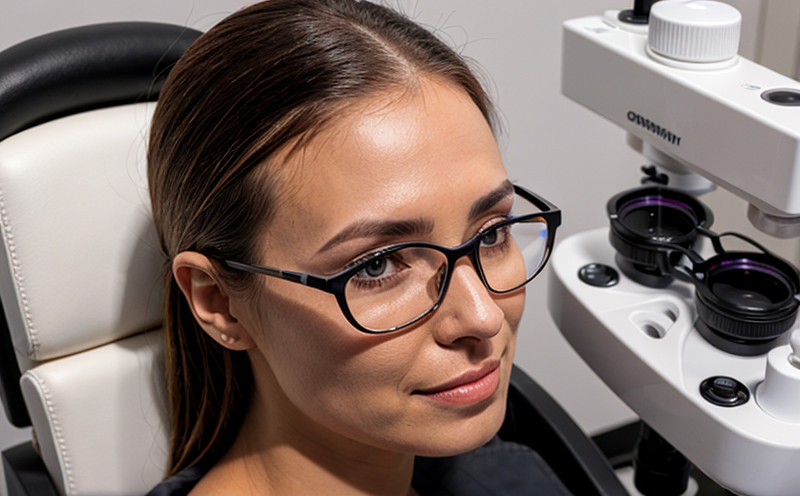USP Bacterial Endotoxin LAL Testing for Ophthalmics
In the pharmaceutical sector, ensuring product safety is paramount. For ophthalmic products, this responsibility is heightened due to their direct and intimate contact with sensitive ocular tissues. The United States Pharmacopeia (USP) sets stringent guidelines for ensuring the sterility of medicinal products; among these, the BET using Limulus Amoebocyte Lysate (LAL) reagent is a critical procedure to detect potential contamination by bacterial endotoxins.
The LAL test leverages the natural response of horseshoe crab blood cells to endotoxins. This test detects endotoxin levels within ophthalmic products, ensuring they are safe for use. Endotoxins, derived from Gram-negative bacteria, can cause severe inflammatory reactions and potentially life-threatening conditions in patients.
The testing process involves several steps: first, the preparation of the sample must be meticulously done to ensure accurate results. Samples undergo preliminary dilutions followed by incubation with LAL reagent. Positive and negative control samples are also prepared to validate test accuracy.
Instrumentation plays a crucial role in this testing procedure. High-resolution spectrophotometers or photometric readers are used to measure the optical density changes that indicate endotoxin activity. The results are then analyzed against the USP guidelines, which specify acceptable limits for bacterial endotoxins based on the product type and dosage.
Our laboratory adheres strictly to these procedures and standards. Our team of experts ensures every step is followed rigorously to provide accurate and reliable testing services. This approach not only meets but often exceeds regulatory requirements, ensuring that products are safe for clinical use.
The significance of this test cannot be overstated in the context of ophthalmic product development and manufacturing. By detecting bacterial endotoxins early in the production process, manufacturers can prevent potential contamination issues that could lead to serious adverse effects on patients.
Our laboratory is equipped with state-of-the-art facilities and experienced personnel who are well-versed in USP guidelines. We use only certified reagents and instruments to ensure consistent and reliable results. This commitment to precision and accuracy underscores our dedication to maintaining the highest standards of quality and safety.
Applied Standards
The testing for bacterial endotoxins in ophthalmic products is governed by several international standards, including USP Chapter <1232>, which specifies the procedure for the LAL test. This standard ensures that all testing processes are consistent and reliable across different laboratories.
- USP Chapter <1232>: Describes the methodology for detecting bacterial endotoxins using LAL reagent.
- ISO 7883: Provides guidelines for ophthalmic preparations, including safety and efficacy testing.
- ASTM E1524-16: Offers additional parameters for validating the performance of LAL reagents used in endotoxin testing.
The combination of these standards ensures that our testing procedures are not only compliant with regulatory requirements but also align with global best practices. Our laboratory is dedicated to maintaining these rigorous standards, ensuring the safety and efficacy of ophthalmic products.
Eurolab Advantages
At Eurolab, we pride ourselves on providing comprehensive and reliable testing services that go beyond mere compliance. Our team of experts is dedicated to ensuring that every test conducted in our laboratories meets the highest standards of accuracy and reliability.
- Experienced Personnel: Our staff consists of highly qualified professionals with extensive experience in pharmaceutical testing, including USP bacterial endotoxin testing.
- State-of-the-Art Facilities: We are equipped with advanced instrumentation and reagents that ensure precise and accurate results. This includes high-resolution photometric readers capable of detecting even trace levels of endotoxins.
- Dedicated Research: Our laboratory continuously invests in research to stay ahead of regulatory changes and emerging technologies, ensuring we are always at the forefront of testing methodologies.
Our commitment to excellence is further underscored by our rigorous quality control measures. Every batch of reagents used for testing is verified against international standards, and all instruments undergo regular calibration to ensure accuracy.
Competitive Advantage and Market Impact
- Comprehensive Testing Solutions: By offering a full suite of testing services for ophthalmic products, including bacterial endotoxin LAL testing, we provide a one-stop solution that saves our clients time and resources.
- Global Recognition: Our laboratory is accredited by prestigious organizations, ensuring the credibility and reliability of our test results. This recognition enhances our competitive edge in the global market.
- Proactive Compliance: We are always ahead of regulatory changes, providing clients with proactive compliance advice that helps them stay ahead of the curve.
- Client Satisfaction: Our commitment to precision and accuracy translates into high client satisfaction. Clients trust us to deliver results that meet or exceed expectations.
Our expertise in USP bacterial endotoxin LAL testing for ophthalmic products positions Eurolab as a leader in the pharmaceutical sector, providing services that are indispensable for ensuring product safety and efficacy. This competitive advantage is further enhanced by our proactive approach to quality assurance and continuous improvement.





